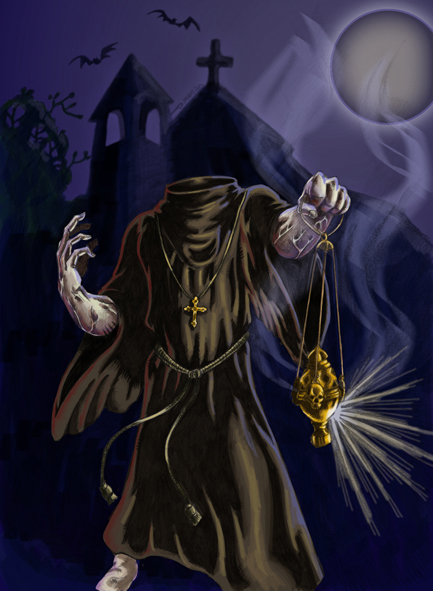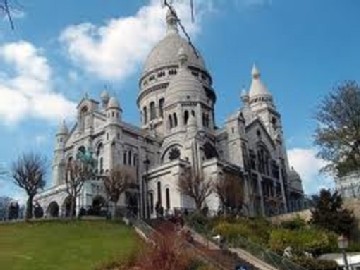The
father without head, also known as either the priest or the friar without
head, is a character belonging to a colonial legend of Latin-American
folklore, who is described as the ghost of a priest without his head.
The
legend tells that the ghost of a catholic priest (or even a friar or a monk)
appears out of nothing; he wears the usual clothes of his order, but the
particularity is that he does not have the head. For this reason, he causes
terror and panic among people. Some versions of the legend of the father
without head agree that the character was a catholic priest whose behavior
was not the proper one for a person with his investiture, or even that he
was a priest who was decapitated unjustly by his enemies. Thereafter his
ghost appears and walks at night, either through the streets or in
hermitages, churches and other religious buildings, looking desolately his
head and frightening the sinners or as a mute witness claiming to justice
for his death. One also tells that in some instances he appears inside of
religious buildings where he celebrates Mass, or even inside of some other
buildings when people tell a priest died in strange circumstances.
Eventually, another characteristic of this ghost is to appear in places
where treasures are kept guarded jealously by ghosts until someone comes who
is brave enough to claim to them.

The
legend of the father without head is common in many Latin-American countries
and there are different versions in Mexico, Centro America, Panama,
Colombia, Ecuador, Peru, Chile, Uruguay and Argentina. Its origin dates back
to the times of colonial evangelization when the Church was the punishment
executor. As revenge to this oppression, the popular belief goes on at the
priest, who is punished forever for some awful sin.
Legends
about ghosts without head who walk at night can be found in all cultures.
The legend of the Abbey of Saint Dionysus is told in France; he is a saint
of the Catholic Church who was martyred approximately in the 240 A.D.
together with Saint Eleuterus and Saint Rusticus, because they preached the
Gospel in the Gallic Empire. Saint Dionysus was decapitated on the
Montmartre hill (whose name would come from Mons-Martyrum, Mount of the
Martyrdom some etymologists, while others assert that it comes from
Mons-Martis, Mount of Mars, because there was a temple dedicated to the
Roman god of war). The legend tells that, once his head had fallen to the
ground, his decapitated body stood up, picked up the head and started walk
for a league, until stopping where presently there is the basilica where he
finally died.
